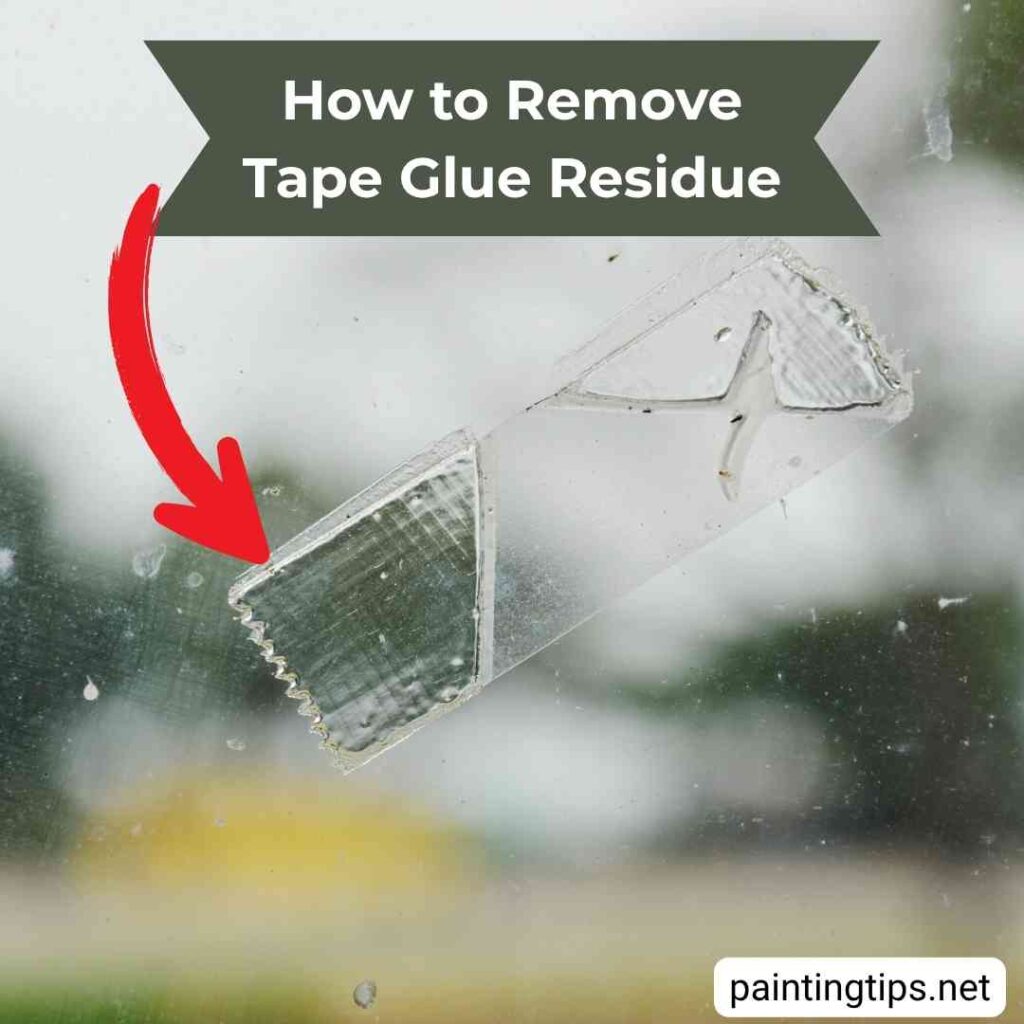Removing sticky tape glue residue can be tricky, but the right method makes it easy. In this guide, we share 8 effective solutions along with a helpful table showing which methods work best for different surfaces.
How to Remove Tape Glue Residue

To remove tape glue residue, start by gently peeling off as much of the tape as possible. Next, dampen a soft cloth with a bit of rubbing alcohol, vinegar, or a specialized adhesive remover, then gently rub the tape glue residue in circular motions until it starts to come off. For sensitive surfaces, it’s safer to clean with warm soapy water to prevent any damage. Finally, wipe the surface clean and dry it thoroughly.
Tape glue residue can be frustrating to deal with, especially when it’s stuck on glass, metal, wood, or painted surfaces. The good news is that with the right methods, you can remove it easily without scratching or damaging the material. Here are several proven methods you can use to effectively remove tape glue residue.
1-White Vinegar
White vinegar provides a natural, gentle alternative to harsh chemicals for removing tape glue residue. Simply saturate a clean cloth with vinegar and place it over the sticky area, allowing it to sit for a few minutes to help loosen the adhesive. The mild acidity in vinegar breaks down adhesive bonds, making it easy to wipe away. This method works well on glass, metal, and plastic surfaces, but it’s best to avoid natural stone or marble since vinegar can cause etching.
2-Rubbing Alcohol (Isopropyl Alcohol)
Isopropyl alcohol, commonly called rubbing alcohol, works fast and effectively to dissolve tape glue residue. To use it, dampen a cotton pad or cloth with the alcohol and gently rub the glue in circular motions. It dissolves many types of glue quickly and is safe for electronics, glass, and painted metal surfaces. However, always test it on a hidden spot first to ensure it doesn’t dull the paint.
3-WD-40
WD-40 is another great option for loosening stubborn adhesive residue. Lightly mist the glue with spray, wait briefly, and then remove it by wiping with a soft cloth. Its oily formula penetrates the adhesive, making removal easy. This method is effective on metal, plastic, and glass surfaces; just remember to clean the area with soapy water afterward to eliminate any leftover oily residue.
4-Acetone or Nail Polish Remover
For stubborn adhesive spots, acetone or nail polish remover works really well. Simply put a bit on a cloth and carefully rub the residue until it breaks down. Acetone works almost instantly, but it can damage painted, plastic, or varnished surfaces, so it’s best reserved for glass, ceramic, or unpainted metals.
5-Paint Thinner (Tiner)
Paint thinner, also known as tiner, is a strong adhesive remover that works well on non-porous surfaces like glass and metal. Lightly moisten a cloth with some paint thinner and gently rub the sticky glue until it loosens. Always use paint thinner in a well-ventilated area and wear gloves to protect your skin. “Related article: Can paint thinner remove paint?”
6-Warm Soapy Water
For a gentle and safe approach, warm soapy water works well for fresh or mild residue. Prepare a solution of warm water and dish soap, soak a cloth or sponge, and carefully clean the adhesive spot. The warmth helps soften the adhesive, while the soap lifts it away. This gentle approach works best on painted walls, plastic, and other delicate surfaces.
7-Baking Soda and Cooking Oil Paste
A safe and natural remedy involves mixing baking soda with cooking oil to create a paste. Apply this paste to the sticky residue, allow it to sit for a few minutes, then scrub gently to remove the glue. The oil loosens the adhesive, while baking soda provides mild abrasion. Wipe clean with soapy water afterward.
8-Hair Dryer (Heat Method)
Heat can make adhesive easier to remove. Use a hair dryer set to warm air and hold it over the glue for 30–60 seconds. Once the adhesive becomes soft, gently peel or rub it away. This technique is suitable for plastic, painted metal, and glass surfaces—but be cautious not to overheat sensitive materials.
Final Cleaning Step
Once you’ve removed the residue, clean the surface with a fresh cloth, wash it using mild soapy water to get rid of any remaining chemicals or oils, and make sure to dry it completely. This ensures the surface stays clean and damage-free.
Which Method Should You Choose?
Different surfaces require different cleaning approaches. Using the wrong method can damage the material, so it’s important to choose wisely. Here’s a quick guide:
| Surface Type | Best Methods | Avoid |
| Glass | White vinegar, rubbing alcohol, WD-40, acetone, paint thinner, heat method | None (most methods are safe) |
| Metal | White vinegar, WD-40, acetone, paint thinner, baking soda & oil paste | Avoid prolonged use of vinegar on bare steel |
| Plastic | White vinegar, rubbing alcohol, WD-40, warm soapy water, baking soda & oil paste | Acetone, paint thinner |
| Painted Surfaces | Warm soapy water, baking soda & oil paste, rubbing alcohol (spot test first) | Acetone, paint thinner, prolonged vinegar use |
| Wood (Unfinished) | Baking soda & oil paste, warm soapy water | Vinegar, acetone, paint thinner |
| Wood (Finished/Sealed) | Vinegar, rubbing alcohol, acetone, WD-40 | None (most methods are safe) |
| Electronics | Rubbing alcohol (99% is best), warm soapy water (for cases/covers only) | Vinegar, acetone, paint thinner |